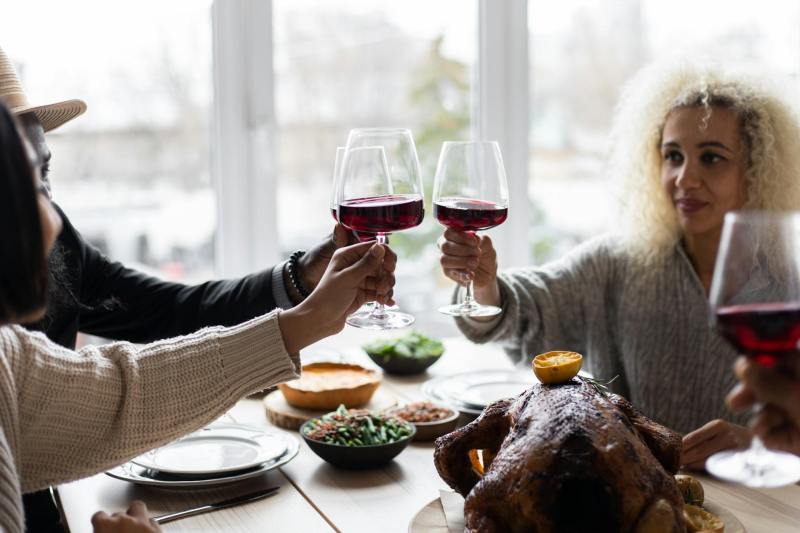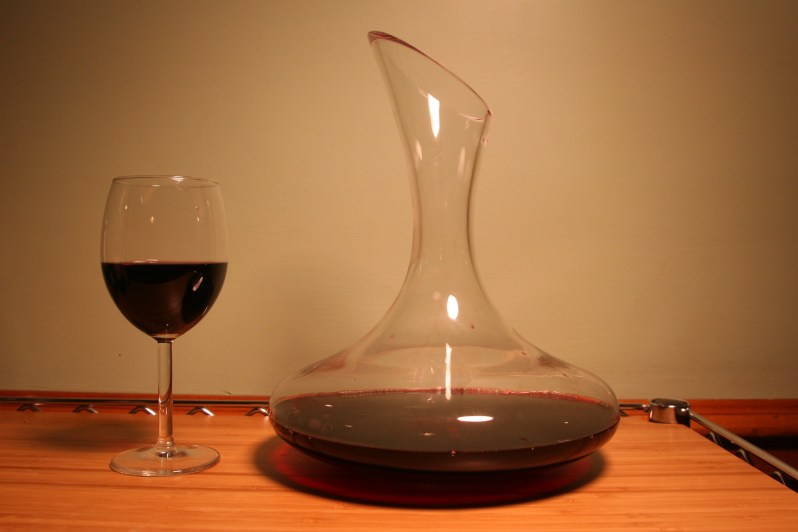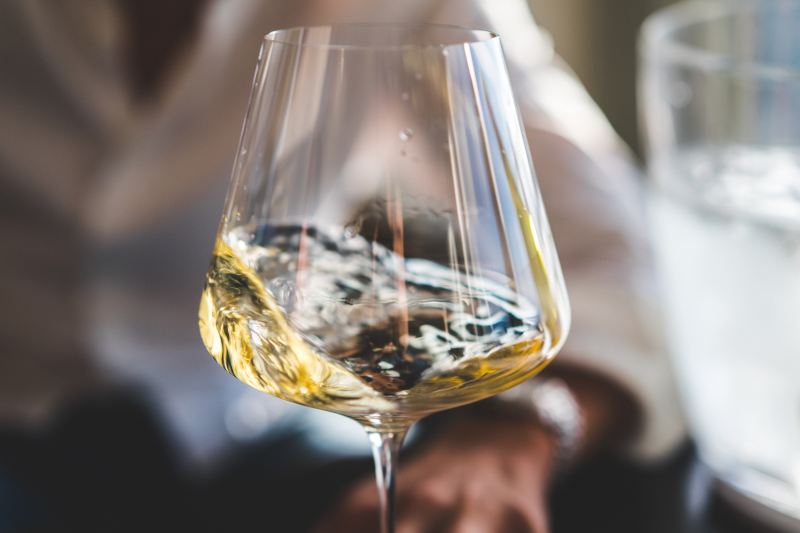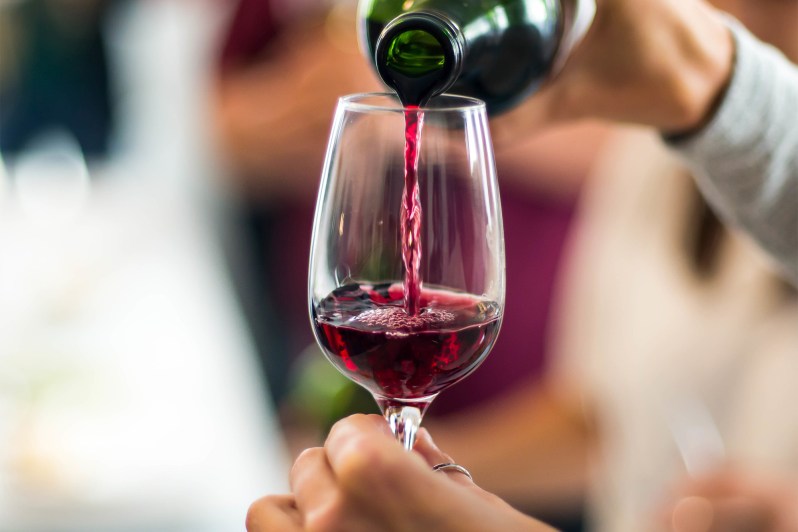
Everyone has their favorite thing on the Thanksgiving table. For some, it’s the green bean casserole. For others, it’s the cranberry sauce. For me, it’s the wine. For many, many reasons, wine is an absolute necessity on Thanksgiving. Whether your intentions are pure and you’re looking for the perfect pairing that complements and highlights each and every rich and savory note and flavor in your Thanksgiving dishes, or you just need a few glasses to get you through dinner with your in-laws — whatever the reason, wine is important.
Selecting the perfect varietal for such a high-pressure dinner such as Thanksgiving, though, can be quite intimidating. Red or white? Light or robust? Fruity or earthy? Wine is a complicated language, and the pressure to understand it when you’re already stressed about cooking and hosting is not an easy task to take on. That’s why we’re here with a few simple guidelines to help you select the perfect bottles to impress and please everyone around your holiday table.

Always have bubbles
Even people who don’t drink wine like a little sparkle on a holiday. Bubbles feel celebratory and festive and are perfect for a big holiday like Thanksgiving. There are so many delicious bubbles to choose from, from champagne to cava to prosecco to Lambrusco, and the possibilities are immense. And contrary to popular opinion, sparkling wines needn’t be expensive to be good. There are plenty of absolutely delicious sparkling wines for less than $30.
When looking for a bottle to pair with dinner, light and fruity options are the best for rich Thanksgiving dishes. We love a sparkling rosé. The acidic notes will balance and complement the heavier, savory dishes of the day. Extremely dry or Brut bottles won’t balance the richness quite as well.

Store and decant properly
Too often, little or no care is put into serving wine apart from pulling it from some pantry shelf and rifling through the crowded junk drawer for a corkscrew. It doesn’t take a lot of extra planning or effort to serve wine the right way, and the tiny extra efforts of decanting and/or chilling properly will pay off in big ways.
Storing wine
To store wine properly, there’s no need for a fancy wine cellar, but be careful not to place your bottles next to a hot oven or outside in the sun. Try to hold all bottles at or around 55 degrees in a dark place like a pantry or cupboard.
Decanting wine
Decanting wine is essential for a few reasons. Firstly, it separates the liquid from the natural sediments that have settled inside the bottle. More importantly, it will enhance the flavor by oxygenating the wine, allowing it to breathe and show off its best self.
As a general rule, red wines should decant between 30 minutes and two hours, depending on the type. Whites, however, need far less time and should only decant for about 30 minutes. Light-bodied reds, which are best for Thanksgiving meal pairings (more on this in a moment), should decant for about 30 minutes before serving.
Serving wine
When it comes time to serve, reds should be enjoyed between 55 and 65 degrees, whites should be between 45 and 50 degrees, and most sparkling wines between 40 and 45 degrees.

Avoid too much oak
“Oaky” is a wine term that describes the taste of a wine aged in oak barrels and can be either a beautiful thing or harsh and overdone. There’s plenty of room for nuance here, but generally speaking, heavily oaky wines should be avoided at the Thanksgiving table. Oaky notes will compete with, not complement, the wide range of traditional dishes. It’s also one of the more polarizing flavors in wine. If the goal is to find a wine that’s suited for most palates, oak should be avoided. Oak can be very potent in varietals like chardonnay, cabernet sauvignon, and syrah.
Light-bodied reds are best
There are a lot of dishes at Thanksgiving, and finding just one wine to pair with all of them can be tricky. It would be very tempting to dissect each and every side, from sweet potato casserole to macaroni and cheese, and find a beautifully matched wine pairing for that specific dish. And if that’s your thing at Thanksgiving, that’s wonderful, and also, what time should I be there?
If your gathering is like most, though, two or maybe three varieties will suit your needs just fine. When it comes to which wine to sip with dinner, light-bodied reds are the way to go. Wines like merlot, Pinot Noir, or Beaujolais are low in tannins and, therefore, suitable for turkey, which is leaner and doesn’t require a heavily tannic wine to complement it. These lighter reds also pair well with many Thanksgiving desserts like pumpkin pie.

Impress with a dessert wine
In this country, people generally have a lot of questions about dessert wine, probably because it’s not tremendously popular in the States in many circles. Simply put, a dessert wine is a highly concentrated, sweet, and luscious wine with a considerably higher alcohol content than table wines. Dessert wines can be white or red and are most often fortified, like Ports and Vins Doux Naturels.
While it’s often assumed that dessert wines are to be paired with dessert, this isn’t always the case. Many dessert wines are rich and sweet enough to be enjoyed on their own as a dessert. Though, this shouldn’t stop you from experimenting with flavor pairings. Dessert wines are beautifully paired with a cheese course at the end of a meal when pie seems too big an undertaking.
Dessert wines tend to be a bit pricier than other wines, but the amount enjoyed should be considerably smaller, so there’s no need to buy this one in bulk; a few bottles will do. Investing in a nice dessert wine is an impressive and special way to end Thanksgiving dinner.




